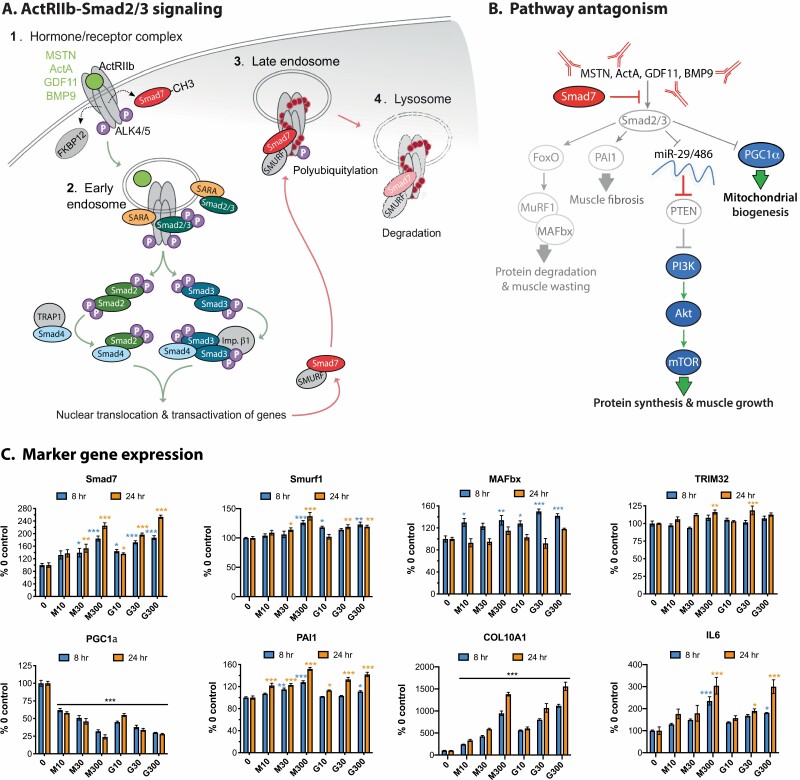Figure 3.
Canonical intracellular signaling pathways activated by ActRII ligands. (A) Endogenous ActRII signaling via phosphorylation (P) of Smad2 and Smad3. Includes receptor activation by myostatin (MSTN), an activin (ActA shown), growth/differentiating factor (GDF)11, or bone morphogenic protein (BMP)9. Each number represents the intracellular signaling locations and red dots represent ubiquitin. Dashed arrows represent movement of FKBP12 and methylated Smad7; green arrows direct pathway activation; red arrows direct negative feedback and signal termination. (B) Responses to pharmacological antagonism of Smad2/3 signaling in muscle. Arrows indicate activation; blocked lines inhibition. Silenced pathways are grayed, whereas blue symbols and green arrows represent pathways activated as a result of agents that attenuate ActRIIa/b activation and/or Smad2/3 signaling. These agents (red) include antibodies and ligand traps or the overexpression of Smad7, the endogenous pathway inhibitor. (C) Relative expression of the indicated genes was plotted using publicly available data from the Gene Expression Omnibus, record GSE67326 (61). This record was obtained from human skeletal muscle-derived cells (hSkMDCs) that were differentiated in vitro from primary satellite cells and then stimulated for 8 or 24 hours with 0, 10, 30, or 300 ng/mL myostatin (M) or GDF11 (G). Raw expression values were transformed to percent of 0 controls for each probe/spot. These values were then used to calculate group means (n = 4). Significant differences between means were determined using a 2-way ANOVA and Tukey’s post hoc test and are indicated by asterisks (compared with 0 controls: *P < 0.05, **0.01, ***0.001).

